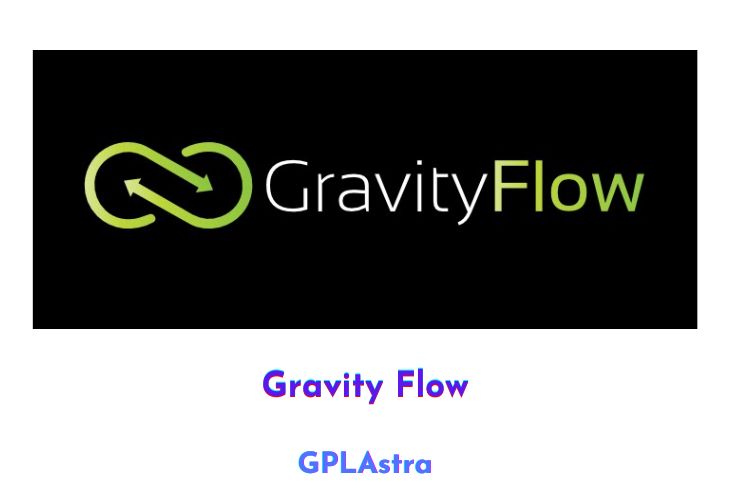Plugins
Gravity Flow v2.9.4 WordPress Plugin
Understanding the capabilities of a powerful WordPress plugin can transform your website’s functionality. The Gravity Flow v2.9.4 WordPress Plugin is such a tool, designed to streamline and automate business processes with efficiency.
This plugin is especially useful for businesses looking to improve their workflow management without needing high-level technical skills. By integrating with the popular Gravity Forms plugin, it offers a user-friendly interface for managing complex tasks.
What Is Gravity Flow v2.9.4 WordPress Plugin – AdClicker?
The Gravity Flow v2.9.4 WordPress Plugin is an extension for Gravity Forms, enabling the automation of workflow processes within WordPress. It helps users to create and manage workflows for form submissions, automate tasks, and route documents to the right people for approval.
As the latest version, it comes with enhanced features that make it easier than ever to set up and manage workflows. This includes improvements to existing extensions and better third-party integration, providing a more seamless experience from start to finish.
One of the strengths of Gravity Flow is its versatility. Whether you’re a small business looking to automate a few simple processes or a large organization with complex workflow needs, Gravity Flow v2.9.4 offers the functionality you require.
How Does Gravity Flow Automate Business Processes?
Automating workflows with Gravity Flow begins with form submissions. When a form is submitted, Gravity Flow takes over to route the information based on the predefined workflows. This could be anything from a simple approval process to a complex multi-step workflow involving different team members.
The plugin works by using a series of steps that you can configure. Each step can have conditional logic, meaning the next step can vary based on the data entered in the form. This flexibility allows Gravity Flow to handle a wide array of business automation needs.
As each step is completed, Gravity Flow can trigger notifications, assign tasks, and update the status of the workflow. This ensures that everyone involved is kept up to date on the progress of tasks.

What Are The Core Features Of Gravity Flow?
- Over 40 different step types including approval, user input, and notification steps.
- Conditional logic for dynamic workflows.
- A drag-and-drop interface for easy workflow management.
- Feedback loops for iterative processes.
- Integration with third-party services and add-ons.
These features make Gravity Flow a powerful tool for businesses that want to save time and reduce errors associated with manual processes.
What’s New In Gravity Flow v2.9.4?
The latest version of Gravity Flow includes updates that enhance its integration capabilities and improve user experience. These updates aim to make the setup and management of workflows even more intuitive.
For instance, there are improvements in reporting features to help identify and resolve bottlenecks in the workflows, ensuring that your processes are as efficient as possible.
Additionally, the latest version brings better compatibility with third-party services, allowing for a more cohesive ecosystem within your WordPress site.
How To Build Custom Workflows With Gravity Flow?
Building custom workflows with Gravity Flow is straightforward thanks to its user-friendly interface. You start by creating a form with Gravity Forms, and then use Gravity Flow to define what happens after the form is submitted.
You can design your workflow by adding steps, such as approvals, notifications, and user input stages. Each step can be tailored to match the specific needs of your process, and the conditional logic ensures that the workflow adapts to the data being processed.
This ease of use, combined with the depth of customization available, makes Gravity Flow an ideal solution for businesses looking to improve their operational efficiency.
What Are The Benefits Of Using Gravity Flow?
The benefits of using Gravity Flow are numerous, but some of the most impactful include:

- Increased efficiency by automating routine tasks.
- Improved accuracy by reducing manual entry errors.
- Faster turnaround times for processes that involve multiple stages or personnel.
- Enhanced visibility into business processes with reporting and management tools.
These advantages lead to a smoother, more reliable way of handling business processes, which can significantly impact the productivity of your organization.
Frequently Asked Questions About Gravity Flow
Understanding Gravity Flow is crucial for those looking to implement this powerful tool. Let’s explore some common questions users have.
What is Gravity Flow?
Gravity Flow is a WordPress plugin that allows users to automate their workflow processes directly within their website. It integrates with Gravity Forms to provide a comprehensive solution for managing online form submissions and automating the associated tasks.
How Do I Download Gravity Flow v2.9.4?
To download Gravity Flow v2.9.4, you can visit the official website or a trusted distributor like AdClicker. Ensure that you have Gravity Forms installed and activated on your WordPress site as it is required for Gravity Flow to function.
What are the Features of Gravity Flow?
Gravity Flow boasts a rich set of features such as multi-step workflows, conditional logic, deadline and scheduling capabilities, and integration with other plugins and third-party services.
How Does Gravity Flow Integrate with Gravity Forms?
Gravity Flow extends the functionality of Gravity Forms by allowing you to define what happens after a form is submitted. You can create workflows that automate tasks based on the information entered in the form, ensuring consistency and efficiency in your business processes.
Can Gravity Flow Be Used for Business Process Automation?
Absolutely, Gravity Flow is designed specifically for business process automation. It can handle everything from simple tasks to complex workflows, making it an ideal choice for businesses of all sizes.
Related Questions on Gravity Flow and Its Use
Expanding on the core topics, let’s delve into more specific questions that users might have about Gravity Flow.

How to Automate Workflows with Gravity Flow?
Automating workflows with Gravity Flow involves creating forms with Gravity Forms and then using the Gravity Flow steps to define actions based on form submissions. It’s a straightforward process that does not require coding skills.
How to Ensure Effective Business Process Management with Gravity Flow?
Effective business process management with Gravity Flow can be achieved by carefully planning your workflows, using the reporting tools to monitor progress, and continuously refining your processes to ensure they are as efficient as possible.
Gravity Flow v2.9.4 WordPress Plugin provides a range of benefits for streamlining your business processes. Whether you are looking to automate simple tasks or manage complex workflows, Gravity Flow is a versatile and powerful solution that can help enhance your productivity and efficiency.

